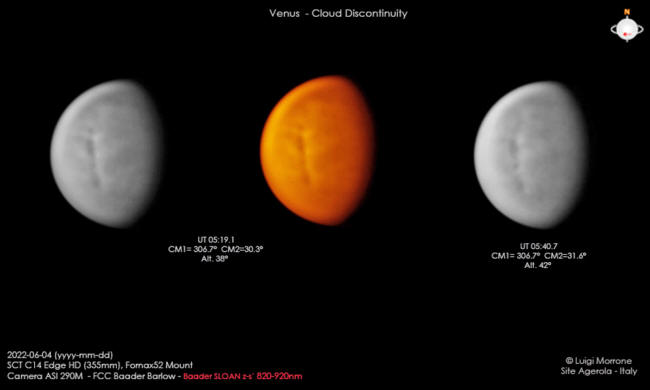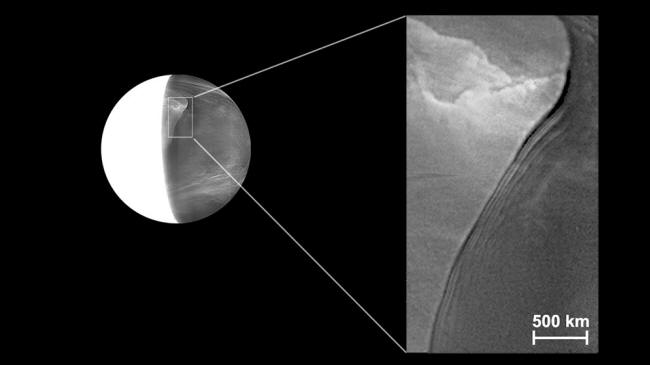|
June 08, 2022 from SpaceWeather Website
A towering wall of acid clouds is racing through the atmosphere of Venus.
Luigi Morrone photographed it from Agerola, Italy, on June 4th:
The Venus Cloud Discontinuity is a relatively new discovery, photographed by Japan's Venus orbiter Akatsuki in 2016 and first spotted by JAXA scientist Javier Peralta.
The massive structure
cuts vertically across Venus's equator, stretching almost 5000 miles
from end to end, and circles the planet faster than 200 mph, making
one lap every ~5 Earth days.
Older photographs of Venus showed it, too.
How do you overlook something so big?
Visually, the Cloud Discontinuity is hidden underneath Venus's opaque cloudtops. To see it, you have to use an infrared filter, which reveals heat trickling up from below.
Indeed, this is how amateurs are tracking the disturbance:
Undulations behind the Cloud Discontinuity on April 15, 2016. Credits: Javier Peralta/JAXA-Akatsuki team.
Numerical simulations
suggest that it might be some kind of exotic nonlinear Kelvin wave;
the jury's still out.
The hot, deadly air on Venus spins nearly 60 times faster than its surface, an effect known as "super-rotation."
Venus's Cloud
Discontinuity could be assisting the spin-up by transporting angular
momentum from the deep atmosphere to the cloud-tops.
|



